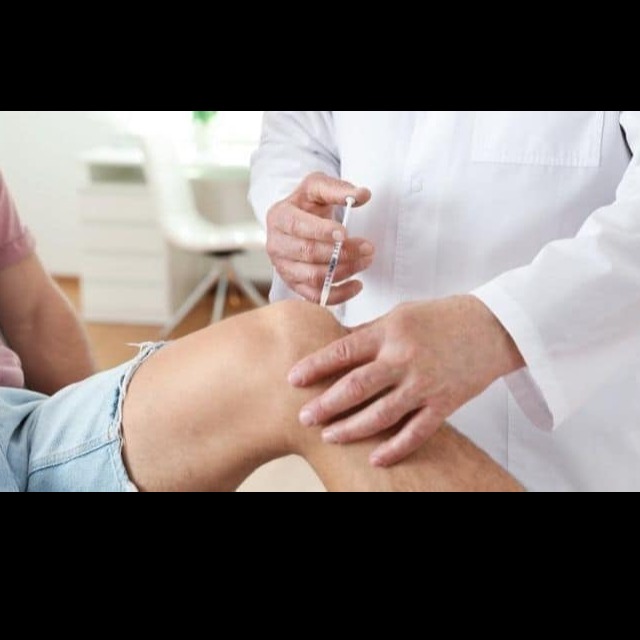+919527500576

This is your website preview.
Currently it only shows your basic business info. Start adding relevant business details such as description, images and products or services to gain your customers attention by using Boost 360 android app / iOS App / web portal.
Knee Injections Explained Knee pain is one of the ...

Knee Injections Explained Knee pain is one of the most debilitating conditions of all. Plus, it can be very challenging to treat, and even harder to live with. You’ve certainly heard of people getting their knees injected to treat pain. Maybe your doctor is even recommending this to you for - Osteoarthritis - Baker cysts - Juvenile idiopathic arthritis - Psoriatic arthritis - Acute monoarticular gout - Pseudogout - Rheumatoid arthritic knees Corticosteroid injections (Cortisone injections) Knee injections with corticosteroids may be used if you have a flare-up of significant pain in the knee. Steroid knee injections can give you symptom relief within 24 to 48 hours. Pain relief can last on average from six to 12 weeks. No more than three or four injections should be given per year, and you should wait at least six weeks between shots. One of the biggest dangers of cortisone injections is that, in the long run, with repeated injection, it may make the condition worse. While steroids are a powerful anti-inflammatory agent, they also can lead to joint damage. Hyaluronic Acid Knee Injections( Viscosupplement) Hyaluronic acid is found naturally in your knee joint to provide cushioning and lubrication. With osteoarthritis, the amount of this fluid can decrease, and the fluid can become thinner. For this reason, doctors may recommend an injection of hyaluronic acid, especially when steroid injections do not provide significant relief. Hyaluronic acid is a natural substance like the synovial fluid in the joint. Hyaluronic acid injections are mostly used to treat osteoarthritis but have been used to treat knees affected by rheumatoid arthritis as well. The benefits appear to last for about six months to a year. Different versions of this kind of treatment exist and some require multiple injections over several weeks. Treatment can be repeated after a six-month waiting period. Beyond just providing extra cushion and lubrication, the injection may also work by: - Anti-inflammatory mechanisms - Promote partial joint healing - Decreasing nerve sensitivity in the joint Platelet-rich Plasma Knee Injections This is another injectable treatment for some knee conditions. The procedure begins by taking blood from a vein in your arm. Your blood is then processed to remove nearly everything but platelets and plasma (the liquid, non-cellular part of blood). The end result is platelet-rich plasma (PRP), which then gets injected into your knee. PRP has a much higher concentration of platelets compared to normal blood. This means the concentration of growth factors can be five to 10 times higher than normal. Growth factors may be responsible for the healing and anti-inflammatory properties of PRP. PRP has been used mostly for chronic tendon injuries and may be helpful for acute ligament and muscle injuries as well. For these reasons, PRP gets a lot of press since some high-profile athletes claim to have healed quickly after PRP injection. Also, for example, Tiger Woods received PRP to help him recover from an anterior cruciate ligament (ACL) tear in his knee. For osteoarthritis, the benefits of PRP are still under investigation. However, some studies have shown PRP offers up to a six-month benefit and better outcomes compared to hyaluronic acid injections. Stem cells injection ( Regenerative therapy) A stem cell knee injection is a regenerative medicine method that nurtures the cartilage with stimulant factors, growth factors and most important special cells, with the capacity of duplication and differentiation into cartilage. Stem cells are raw materials of body from which all other cells are formed. These cells are not only capable of multiplying by dividing into daughter cells but also into specialized cells like cartilage cells, bone cells and muscle cells. This ability to generate new cells types is not present in any other cell of body. It can be Autologus (derived from own bone marrow) or Allogenic ( derived from another healthy adult bone marrow). This can be a better, faster and long term solution to your problem (compared to other techniques such as surgery or PRP). The purpose of stem cell therapy is to help repair damaged tissue, improve organs function and stop the progress of the basic illness. In autologus derived stem cells procedure, the stem cells are taken from the patient's own bone marrow by aspiration. Immediately after, the whole sample containing not only the stem cells, but also growth and stimulant factors, is administered in the area of interest. In Allogenic derived stem cells procedure, stem cells are obtained from a cell bank made by pooling of bone marrow aspirates from three healthy donors and then crypreserved and then cryshipped for delivery at -185C to -196C and then administered in the knee after thawing to room temperature. We recommend performing this direct knee injection at least 2 to 3 times, one every six months or every year to maximize the results of the treatment.
